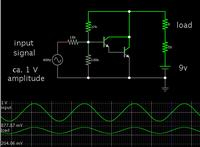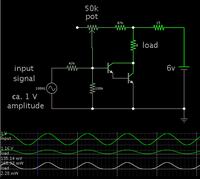Avidestroyer
Junior Member level 2

- Joined
- Jan 11, 2013
- Messages
- 23
- Helped
- 0
- Reputation
- 0
- Reaction score
- 0
- Trophy points
- 1,281
- Activity points
- 1,410
I made an 1 watt amplifire. Diagram is shown below link.
https://sci-toys.com/scitoys/scitoys/computers/solderless/small_1_watt_audio_amplifier.jpg
this amplifire is worked well but it is not suitable for huge bow. So I am intend to create 3 watt amplifire.
But when I add 6 transistor to this circuit instead of two, this amplifire not work, just the speaker make a sound noise. My power supply was 6 v. Why this problem occure? Plz tell me anyone.
https://sci-toys.com/scitoys/scitoys/computers/solderless/small_1_watt_audio_amplifier.jpg
this amplifire is worked well but it is not suitable for huge bow. So I am intend to create 3 watt amplifire.
But when I add 6 transistor to this circuit instead of two, this amplifire not work, just the speaker make a sound noise. My power supply was 6 v. Why this problem occure? Plz tell me anyone.



